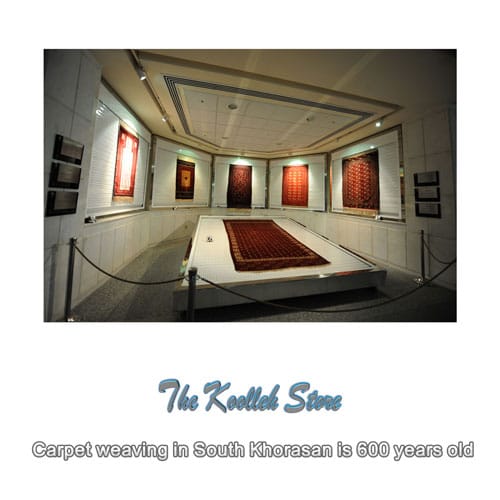Carpet weaving in South Khorasan is 600 years old

The head of the Union of Manufacturers and Weavers of Hand-woven Carpets of South Khorasan, stating that the history of carpet weaving in South Khorasan dates back to many years, said:
Mohammad Hassan Kamyabi Musk, pointing out that the hand-woven carpet is beautiful and desirable that has its roots in the culture and history of this border and region, added: Turns.
He added: The owners of the Herat school, according to the order, prepared designs that were brought to the southern region of Khorasan for weaving by famous merchants from Ghohestan, and the hand-woven items of the people of South Khorasan were taken to Herat by the same merchants.
The head of the South Khorasan Hand Woven Carpet Manufacturers and Weavers Association added: The carpets that are known in the world today as Herati carpets are hand-woven in this region, and the Herati designs that are now woven as Herati fish are 60% The products of this region are included.
Kamyabi continued: The writings of Cecil Edward, a prominent author and researcher of carpets in the book of Iranian carpet weaving and the documents left by Khajeh and the great merchant of Ghaenat Khajeh Mahmoud Ali Arbab Ibn Malek Hussein Ghaeni also confirm this.
Regarding the production of carpets, he said: Carpet weaving is divided into three periods in the last year, the years before 1300 AH, when the period of weaving good and excellent carpets and examples of them remained, the years 1300 to 1322, due to the world war and the consequences of That carpet export decreased sharply, and there was a recession and turmoil in the production and export of carpets, and the carpets in the region declined sharply in terms of quantity and quality.
The head of the South Khorasan Handmade Carpet Union continued: The third period from 1330 onwards began with the arrival of producers such as Shargh Company, Abdul Ali Ahmadi, Haj Hossein Amini and Haj Gholam Hossein Kamyabi, who were among the producers of exquisite carpets in the region.
Kamyabi reminded: Today, in all the cities and villages of South Khorasan, we find hardworking and artistic groups who already make a living by weaving carpets.
He emphasized: Employment of more than 50,000 carpet weavers in the region and production of 200,000 square meters of hand-woven carpets, which in terms of elegance, beauty and reasonable price, and the design and role favored by world markets, more than 90% of which are exports in addition to the artistic aspects of carpets. Shows its importance in the regional economy.
The success of preserving the originality in the design and role of handicrafts in South Khorasan is one of the influential factors in the continuation of the province’s carpet exports.
Kamyabi, stating that most of the carpets in South Khorasan are the work of women carpet weavers in the province, said: Most of the carpet weavers in the province have housewives who produce carpets as their main occupation along with housekeeping.
He pointed out that in some areas of South Khorasan, the only source of household income is pre-production of carpets, adding: Most of the income of the villagers, especially in recent years, is due to successive droughts from the income of carpet production.
The head of the union of producers and weavers of hand-woven carpets of South Khorasan pointed out: The most famous hand-woven weavers of this region are related to the villages of Mantegh Derakhsh, Maud, Ebrahim Abad Khosaf, Mehdi Abad, Fazlabad, Aisk, Abiz and Chaj.

